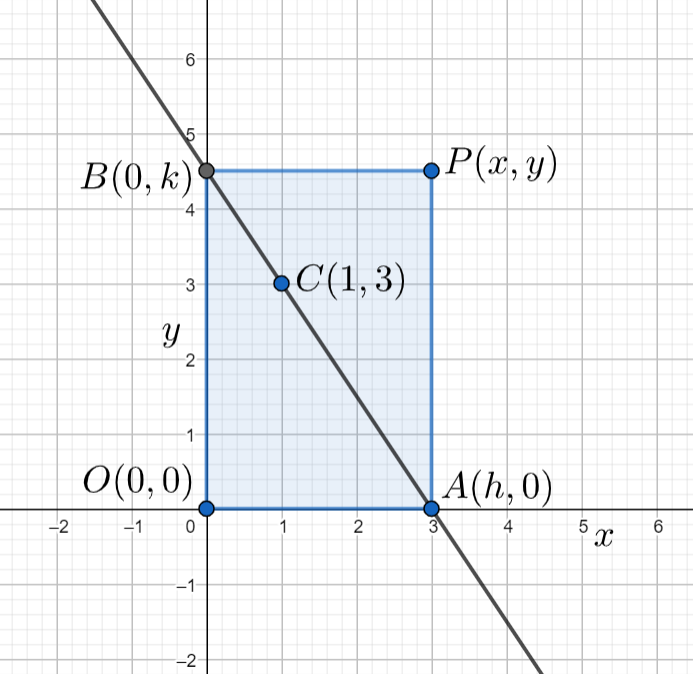
The variable line drawn through the point
A.
B.
C.
D.
Answer
440.4k+ views
Hint: In this problem we need to find the locus of the point
Complete step-by-step answer:
Given data, The variable line drawn through the point

Let the coordinates of the points
Now the slope of the line
Substituting the values
Now the slope of the line
Now the line
Doing cross multiplication in the above equation, then we will get
Using distribution law of multiplication in the above equation, then we will have
Cancelling the term
Simplifying the above equation by using mathematical operations, then we will have
Replace the terms
So, the correct answer is “Option c”.
Note: We can also use the collinear property form the points
Complete step-by-step answer:
Given data, The variable line drawn through the point

Let the coordinates of the points
Now the slope of the line
Substituting the values
Now the slope of the line
Now the line
Doing cross multiplication in the above equation, then we will get
Using distribution law of multiplication in the above equation, then we will have
Cancelling the term
Simplifying the above equation by using mathematical operations, then we will have
Replace the terms
So, the correct answer is “Option c”.
Note: We can also use the collinear property form the points
Recently Updated Pages
Master Class 9 General Knowledge: Engaging Questions & Answers for Success

Master Class 9 English: Engaging Questions & Answers for Success

Master Class 9 Science: Engaging Questions & Answers for Success

Master Class 9 Social Science: Engaging Questions & Answers for Success

Master Class 9 Maths: Engaging Questions & Answers for Success

Class 9 Question and Answer - Your Ultimate Solutions Guide

Trending doubts
State and prove Bernoullis theorem class 11 physics CBSE

What are Quantum numbers Explain the quantum number class 11 chemistry CBSE

Who built the Grand Trunk Road AChandragupta Maurya class 11 social science CBSE

1 ton equals to A 100 kg B 1000 kg C 10 kg D 10000 class 11 physics CBSE

State the laws of reflection of light

One Metric ton is equal to kg A 10000 B 1000 C 100 class 11 physics CBSE




